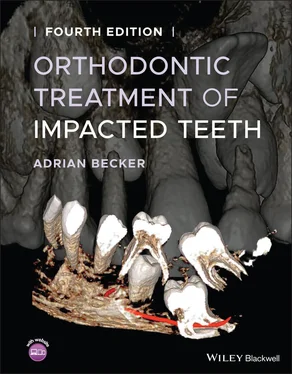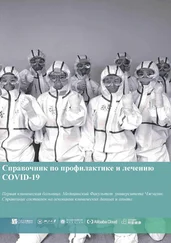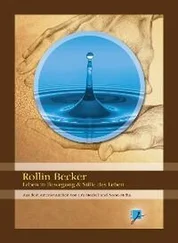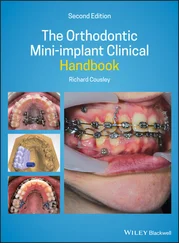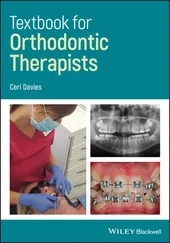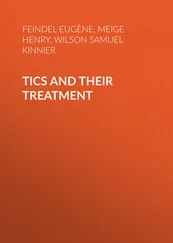Notwithstanding its benefits, it must be noted that there are a large number of situations, particularly concerning maxillary canines, where this method is inappropriate. Examples of such situations include the following:
Inadequate space in the dental arch to accommodate the tooth along any part of an intended path on the way to its normal location.
The surgeon may realize at the time of surgery that spontaneous eruption appears unlikely to occur. Without the facilitating element of a traction appliance, he or she may be tempted to consider more radical surgical short‐cuts, such as those listed above, despite the likelihood of thereby causing irreversible damage to the periodontium.
Surgical exposure of a canine that is associated with severe resorption of the root of the adjacent incisor is difficult to accomplish without secondarily and inadvertently exposing the resorbed root apex. In this situation, leaving this highly sensitive area open will inevitably risk de‐vitalization of the incisor.
In a situation where an impacted tooth is in a grossly ectopic location, spontaneous eruption is unlikely to occur and assisted and directed traction is unavailable to bring about its resolution, unless suitable means were prepared ahead of time as a precautionary measure.
With an unerupted canine that is located high on the labial side of the alveolar ridge, above the attached gingiva band, if a direct, window technique, open surgical exposure is performed, one would of necessity have to launch into a series of reparative periodontal tissue grafts at the conclusion of the orthodontic treatment. Such grafts would be needed to substitute for the thin and vulnerable oral mucosal attachment that would otherwise result.
For an adult in the 40+ age group with an unerupted and untreated maxillary canine, the eruptive potential of the tooth is likely to have exhausted itself long ago and the tooth is unlikely to respond to the surgical exposure.
There are additional situations in which the use of open surgical exposures will be contraindicated, even when extrusive orthodontic traction is indeed available. Many of these situations will be discussed in the ensuing chapters of this book.
Exposure with pressure pack
It is common to find mesial impaction of a third molar, beneath the distal bulge of the second. It is less common to find a mesial impaction of a mandibular second permanent molar, beneath the distal bulbosity of the first permanent molar. The two situations, however, have similar characteristics. In their mildest form, they both present a condition that may sometimes respond merely to surgical intervention and packing. This is carried out by the exposure of the occlusal surface of the tooth and the deliberate and forceful wedging of a pack in the area between the two teeth and leaving it in place for 2–3 weeks. During this period, the pressure caused by the pack will often succeed in eliciting a small distal movement of the impacted molar, possibly causing it to erupt more freely when the pack is removed. The degree of control that is available to the operator in judging the amount of pressure to be applied is minimal and the extent to which the pack interferes periodontally is impossible to assess. Therefore, damage to the periodontium of the two adjacent teeth becomes a distinct possibility. Success in bringing about an improved position of the tooth may exact a cost in terms of the health of its supporting structures.
As an alternative to the use of a pressure pack, some orthodontists advocate the use of brass wire [16] or elastic separators, in order to apply a similar disimpacting force. Simple remedies of this kind may be effective in situations where the discrepancy is minor. However, in many of these types of cases the brass wire and the elastic separators will need frequent tightening, replacement and renewal. Briefly stated, the method is unreliable at best.
The surgical elimination of pathology
Soft tissue lesions
The subject of benign tumours and cysts is fully discussed in Chapter 14. For the aspect of surgical intervention, let it suffice to mention here that surgery is the first line of treatment that is indicated for these conditions. Immediately after the first tentative diagnosis, surgery is advised, if only for reasons of obtaining biopsy material to confirm the innocence of the diagnosis. Orthodontic treatment should also be considered at that time, although its application should be delayed until after healing of the surgical wound. In the case of cysts, orthodontic treatment should begin after the cyst has been eliminated and after a filling‐in of bone has occurred around the involved teeth. The actual repair of the bony defect will itself improve the positions of grossly displaced teeth. This will be evident in follow‐up radiographs and in the anatomical topography of the alveolar bone in the area. However, the surgical wound may take many months to heal completely. In the interim, supportive preliminary tasks (oral hygiene instruction, caries treatment, motivational education, etc.) may be undertaken, in preparation for the proposed orthodontic treatment. It is worthwhile to begin with achieving positive results from a preventive dental health programme aimed both at eliminating marginal gingival inflammation and at reduction of the incidence of caries.
In the case of obstructive impaction, logic dictates the removal of the body that is obstructing the natural eruptive potential of the tooth. This is normally performed by the surgeon and often without recourse to adjunctive orthodontics. Although the procedure often succeeds, this course of action is far from foolproof.
In Chapter 6we examine the reliability of spontaneous eruption, which results from the different surgical procedures involved in the treatment of impacted incisors. For the present discussion, we must recognize that there is a significant number of cases in which eruption does not occur within a reasonable time‐frame.
Following the removal of the obstruction, be it a supernumerary tooth, an odontome, residual deciduous roots or even an infra‐occluded primary tooth, the position of most unerupted teeth will eventually improve. However, many of these teeth may not erupt without assistance. The failure to erupt may be due to certain factors, including the extent of their displacement, the character of the healing tissues or other factors relating to the erstwhile obstruction.
A hard tissue body, such as a supernumerary tooth, occupies significant space in the alveolus. A compound odontoma will generally consist of a random mix of dental tissues and, together with its accompanying dental follicle, in many instances occupies even more space. The result is gross displacement of the developing bud of the normal tooth, both in terms of overall distance from its normal location and in the alteration of the orientation of its long axis. The root and/or crown of a tooth of the normal series will likely be deflected, whether mesially, distally, lingually or buccally. It may also be displaced superiorly (in the upper jaw) or inferiorly (in the lower). All these possible deflections will compromise its chances of spontaneous eruption. Cramped circumstances will have developed between the pathological entity and the adjacent teeth and between (a) the entity and the floor of the nose or (b) the lower border of the mandible (see Chapter 13). A further developmental risk is the forming of abnormally shaped roots on otherwise normal teeth. Such an abnormal consequence will itself cause deviated eruption paths and even prevent spontaneous eruption altogether. However, provided that the integrity of their periodontal ligament (PDL) is not compromised and the odontoma extracted, they may be successfully erupted with orthodontic appliances.
Читать дальше
